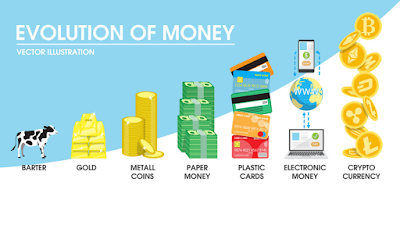History of Cryptocurrency
History of Cryptocurrency
In 1983, the American cryptographer David Chaum conceived an anonymous cryptographic electronic money called ecash. Later, in 1995, he implemented it through Digicash, an early form of cryptographic electronic payments which required user software in order to withdraw notes from a bank and designate specific encrypted keys before it can be sent to a recipient. This allowed the digital currency to be untraceable by the issuing bank, the government, or any third party.
In 1996, the National Security Agency published a paper entitled How to Make a Mint: the Cryptography of Anonymous Electronic Cash, describing a Cryptocurrency system, first publishing it in an MIT mailing list and later in 1997, in The American Law Review (Vol. 46, Issue 4).
In 1998, Wei Dai published a description of "b-money", characterized as an anonymous, distributed electronic cash system. Shortly thereafter, Nick Szabo described bit gold. Like bitcoin and other cryptocurrencies that would follow it, bit gold (not to be confused with the later gold-based exchange, BitGold) was described as an electronic currency system that required users to complete a proof of work function with solutions being cryptographically put together and published.
The first decentralized cryptocurrency, bitcoin, was created in 2009 by presumably pseudonymous developer Satoshi Nakamoto. It used SHA-256, a cryptographic hash function, in its proof-of-work scheme. In April 2011, Namecoin was created as an attempt at forming a decentralized DNS, which would make internet censorship very difficult. Soon after, in October 2011, Litecoin was released. It used script as its hash function instead of SHA-256. Another notable cryptocurrency, Peercoin used a proof-of-work/proof-of-stake hybrid.
On 6 August 2014, the UK announced its Treasury had been commissioned a study of cryptocurrencies, and what role, if any, they can play in the UK economy. The study was also to report on whether regulation should be considered.
Formal definition
According to Jan Lansky, a cryptocurrency is a system that meets six conditions:
- The system does not require a central authority; its state is maintained through distributed consensus.
- The system keeps an overview of cryptocurrency units and their ownership.
- The system defines whether new cryptocurrency units can be created. If new cryptocurrency units can be created, the system defines the circumstances of their origin and how to determine the ownership of these new units.
- Ownership of cryptocurrency units can be proved exclusively cryptographically.
- The system allows transactions to be performed in which ownership of the cryptographic units is changed. A transaction statement can only be issued by an entity proving the current ownership of these units.
- If two different instructions for changing the ownership of the same cryptographic units are simultaneously entered, the system performs at most one of them.
In March 2018, the word cryptocurrency was added to the Merriam-Webster Dictionary.


Comments
Post a Comment